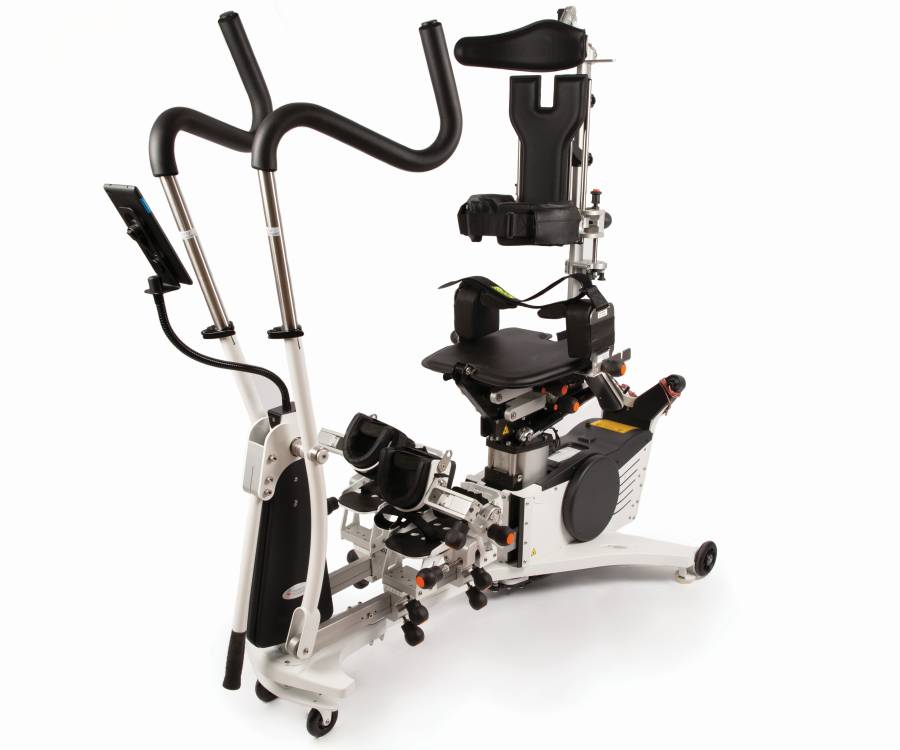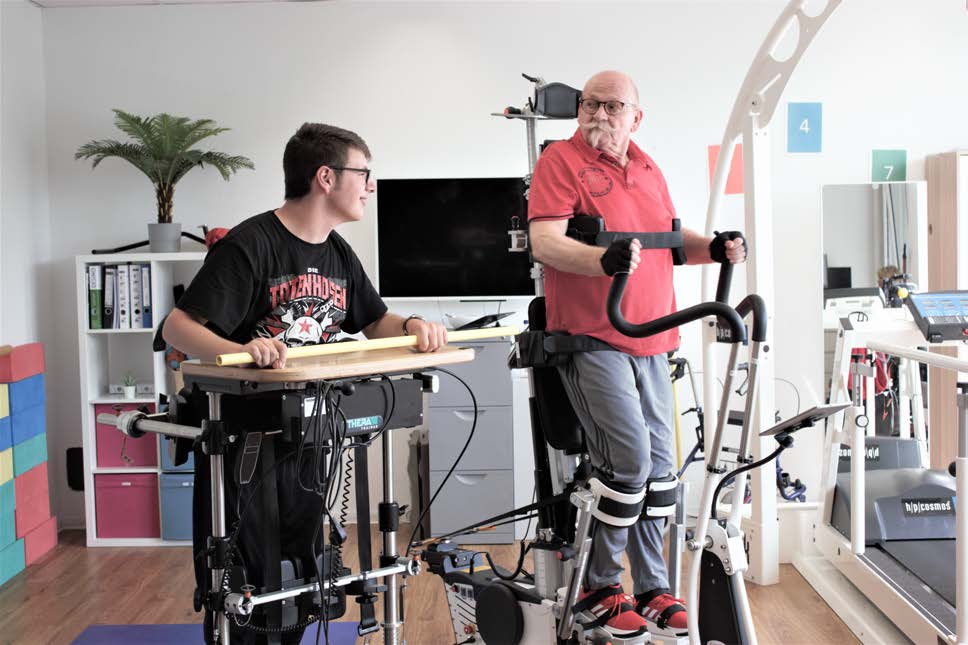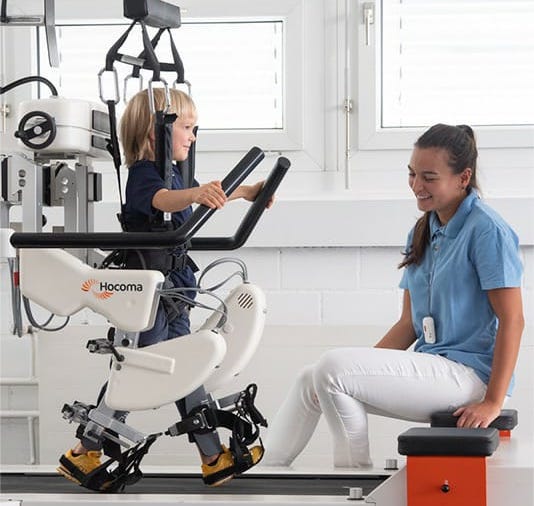
Learn to walk again
The pediatric orthosis are designed to accommodate small children by offering a special set of harnesses and cuffs that provide a precise fit for patients with femurs between 21 and 35 cm (8.3 - 13.8 in).
The two interchangeable sets of orthoses can be easily swapped out by the therapist and both offer the same wide range of therapy benefits.
hunova is a robotic device for rehabilitation and the sensorimotor assessment of the lower limbs and trunk, developed to meet the clinical need for an objective assessment and treatment tool to support doctors, physiotherapists and patients throughout the rehabilitation process.
hunova is used for the rehabilitation of ankle, knee, hip and lumbar region of the spine, making the patient carry out passive mobilization exercises, muscle strengthening, proprioceptive exercises and postural and balance control. The device is also used for sports rehabilitation
hunova enables the physiotherapist to work on postural control, proprioception and balance, and it is used to prevent and evaluate the risk of falls in the elderly and the recovery of cognitive aspects.
In the neurological area, hunova is used for post-stroke functional re-education, for the treatment of degenerative diseases of the central nervous system and lesions of the peripheral nervous system, providing exercises of postural control, balance, core stability and proprioception.
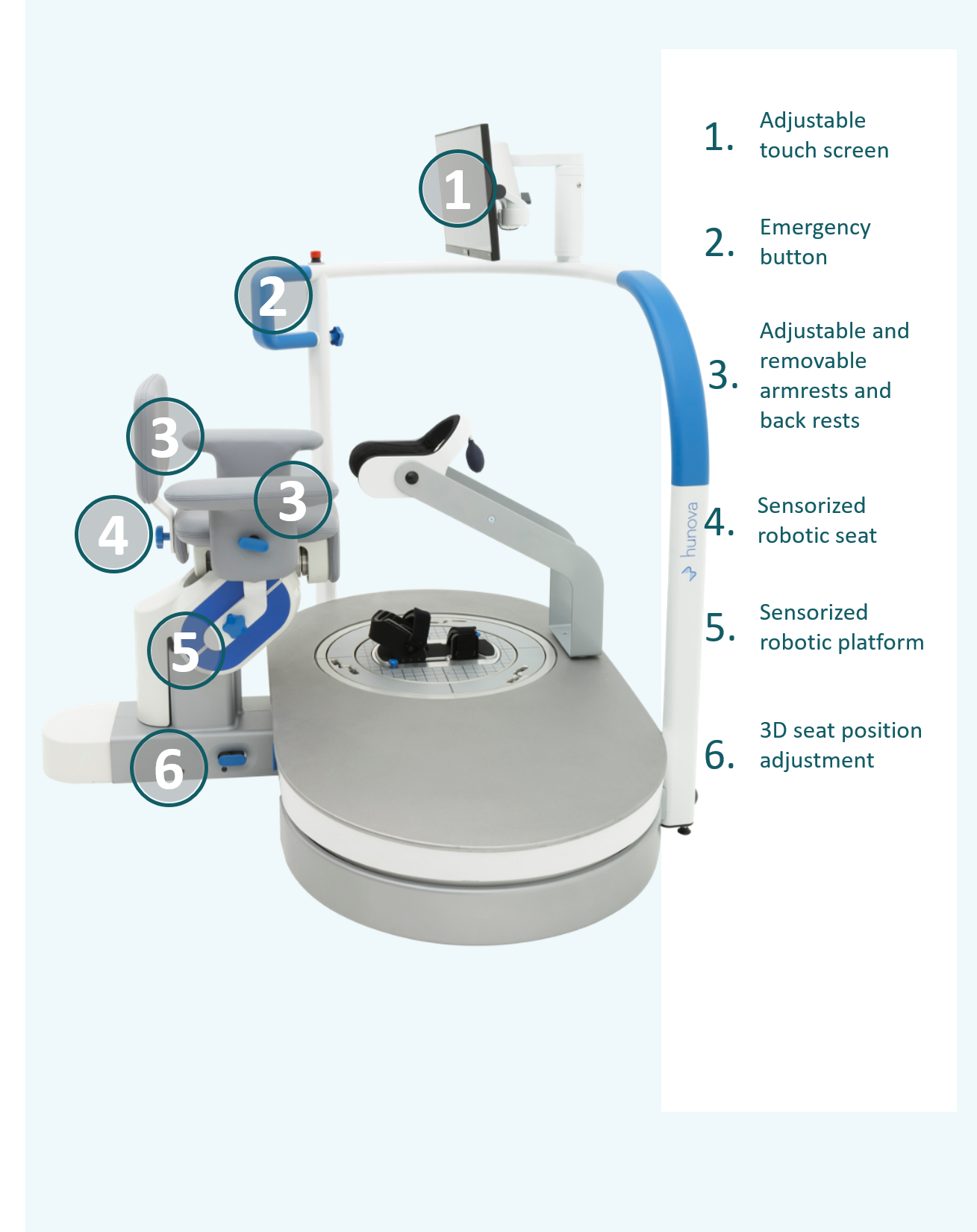
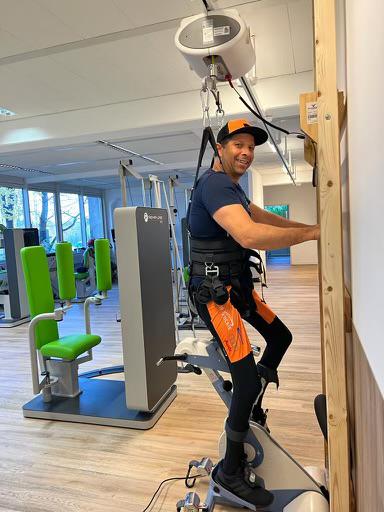
The use of standardized protocols developed from international guidelines, combining more than 200 exercises from various applications (orthopedics, geriatrics, neurology).
The modification of standard protocols to be adapted to specific applications
The creation of personalized protocols for the needs of each facility
hunova enables the operator to select the difficulty level of the protocol in an accurate and simple way, in order to adapt the therapy to each patient’s abilities.
The rehabilitation process is integrated with an evaluation path to record and monitor the clinical situation of the patient, thus supplying objective reports throughout the therapy.
NUSTEP – active training, even for patients with severe movement restrictions.
NUSTEP is a full body trainer that offers safe, effective and adapted training for patients. It is a combination of recumbent bike, cross trainer and stepper.
Functionally disturbed body regions and areas can be supported by healthy ones and integrated into the movement process.
In this way, NUSTEP can contribute to reintegrating “active movement patterns” into movement processes, training coordination and improving muscle strength.
The linear movement of the foot pedals guides the legs in a similar way to a movement rail or functional press.
NUSTEP ® is available in various configurations and used in the following areas, among others.
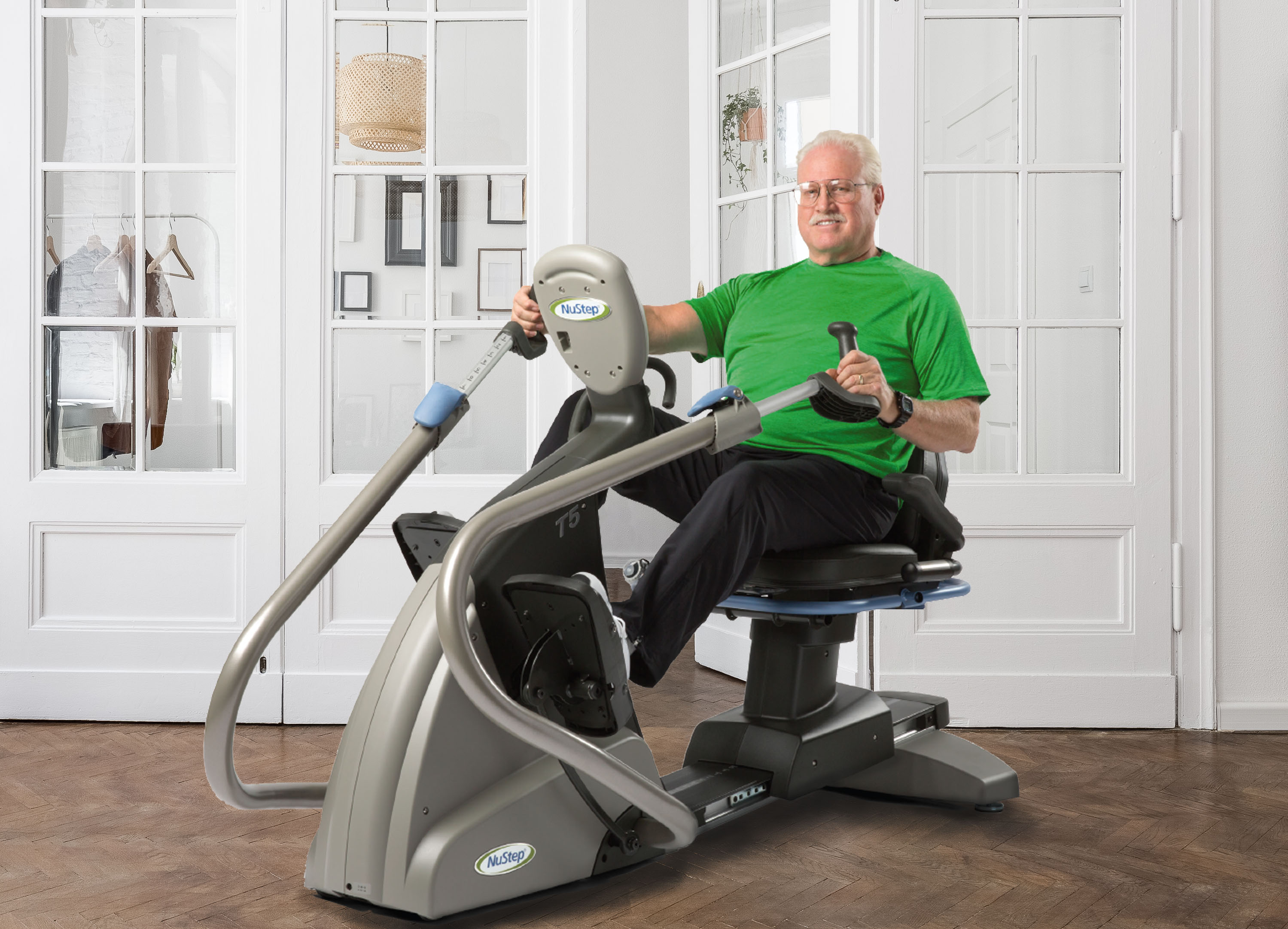
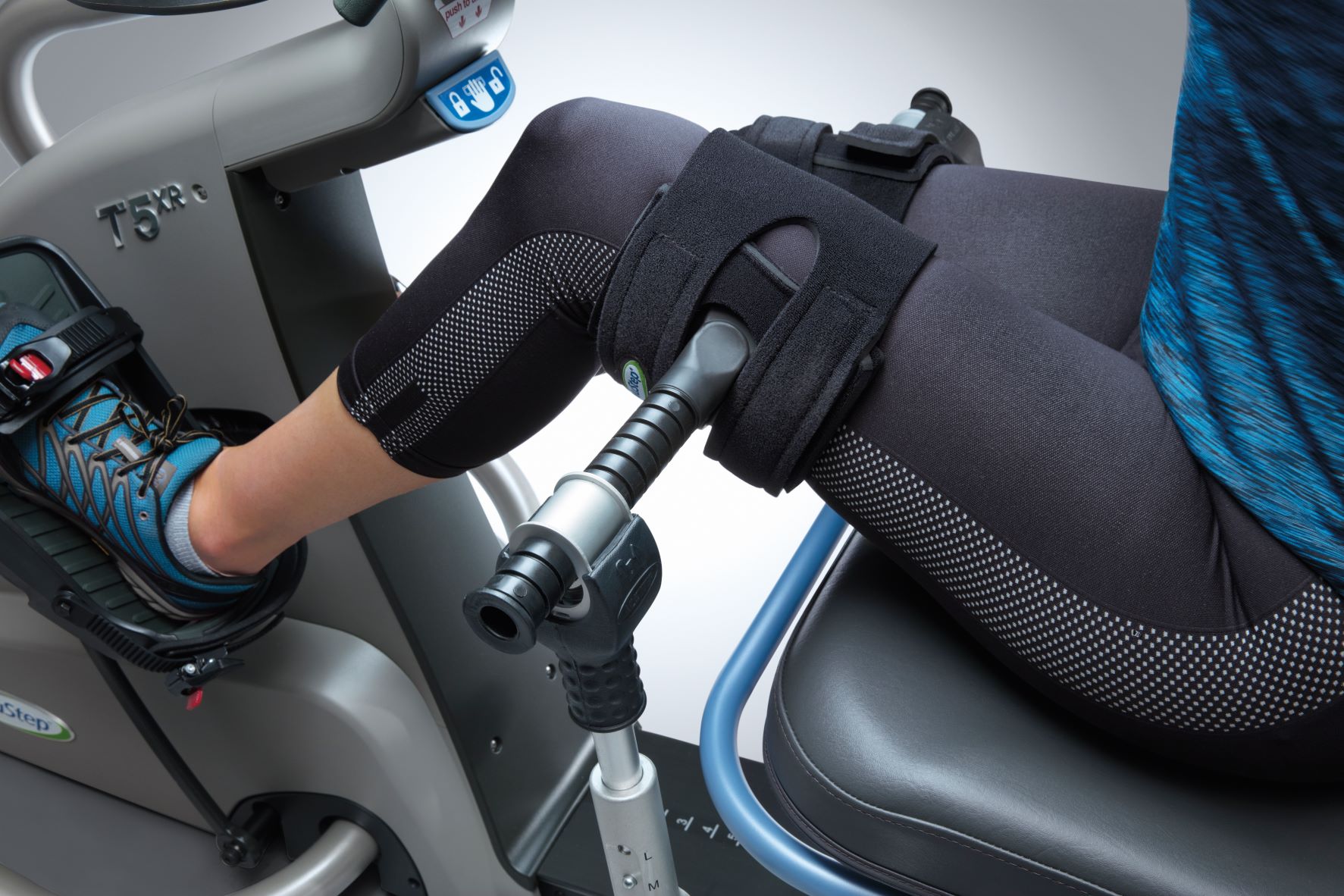

NEUROROBOTIK has the latest Ekso generation, of which is equipped with powerful new software, real-time feedback and with the eksoView touchscreen controller. Compared to other devices in the industry, the eksoNR achieves the most natural gait pattern in the industry.
Based on years of research, successful implementation in more than 400 rehabilitation centers worldwide and more than 180 million documented training steps, the eksoNR has been developed to help us achieve a significantly better rehabilitation outcome.
The eksoNR is designed for a wide range of patients. It is designed for patients with stroke, paraplegia, acquired brain injury, traumatic brain injury or other neurological diseases.
The most adaptive and well-researched exoskeleton on the market, offering our patients the highest level of Neuro-Rehabilitation.
The eksoView touchscreen controller makes it easy to navigate the device. Thanks to the display, performance statistics and haptic/acoustic signals for gait correction, the operation is intuitive, clear and provides real-time feedback to help our patients to optimally benefit from the treatments.
Is a software that adapts to our patient's healthcare needs. SmartAssist enables more effective use of the eksoNR throughout rehabilitation. With a greater number of steps, a more natural gait pattern and active patient engagement, SmartAssist provides us with the ability to specifically treat gait deficits.
SmartAssist is easy to customize for different patients and provides feedback on gait symmetry and alignment. It also provides individualized motor support according to the patient's performance, from 0-100% per side of the body.
With SmartAssist, we can better train the patient's balance and support them from sitting to standing. Mobile gait training in limited space is also possible.
Patient progress at a glance
With eksoPulse, the entire course of treatment can be documented and
monitored.
The entire treatment data is stored centrally with automatic tracking. Treatments can be evaluated efficiently, future treatments can be optimally planned in a patient-centered manner.*
* In order to preserve privacy, the patient's therapy data is encrypted in the cloud and can only be accessed by physicians and therapists with valid access via a patient ID.
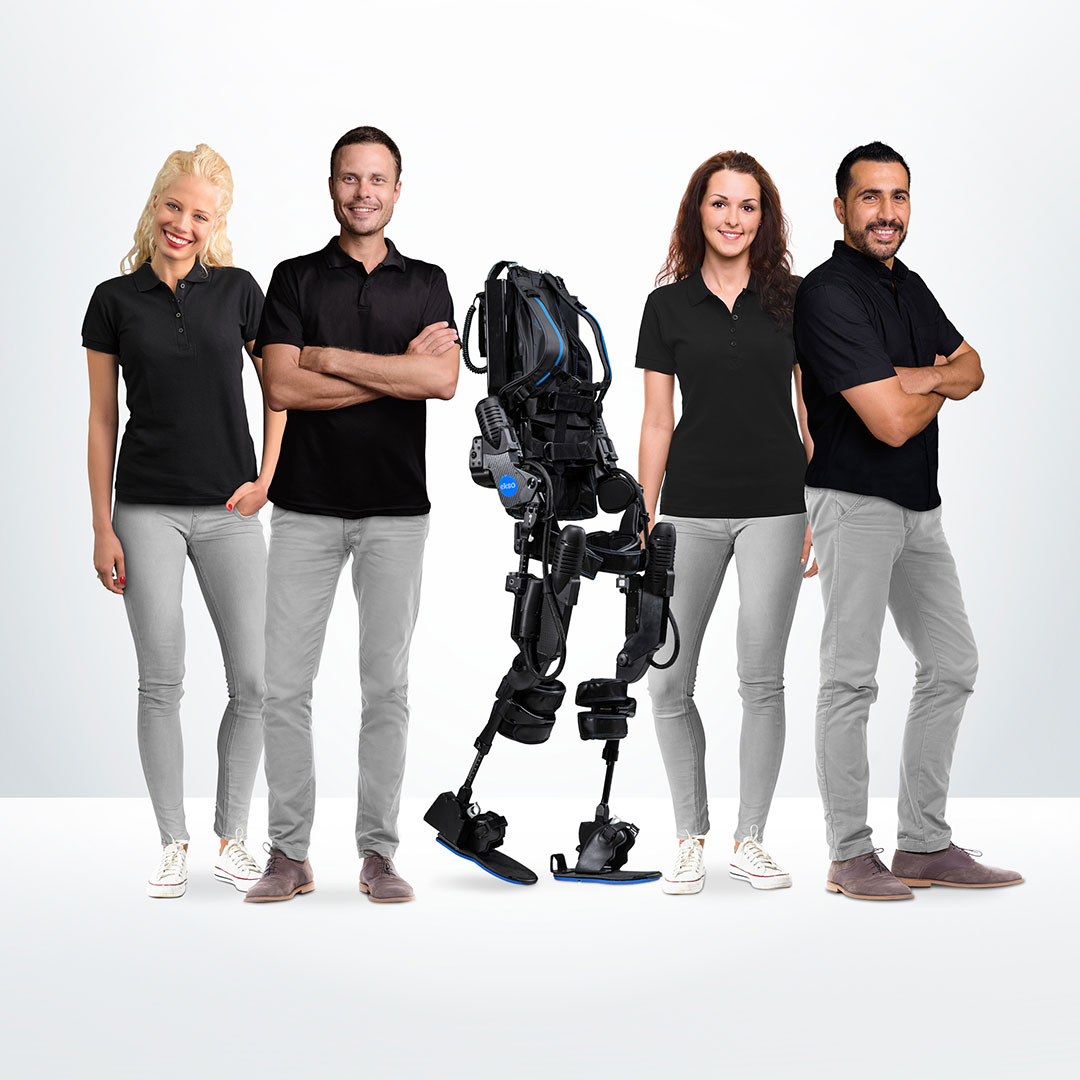
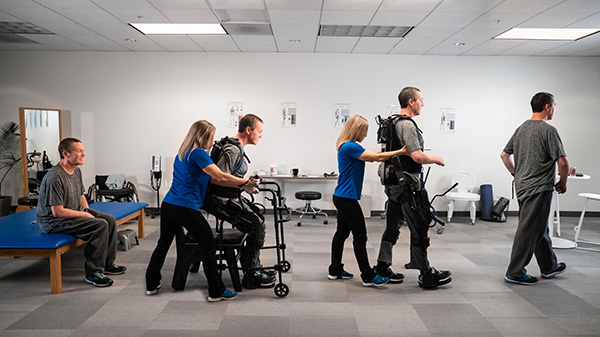
With the eksoNR, patients can achieve greater progress in the early stages of the rehabilitation phase, thus improve their treatment outcomes. The eksoNR increases independent mobility, gait speed, walking distance and balance outside the device. With better outcomes, fewer patients need to prolong therapy.
With the user-friendly eksoView touchscreen controller, we have more control over treatments and can provide better insights to patients.
Through SmartAssist software, the eksoNR automatically adjusts to challenge and motivate patients to achieve greater treatment success. and motivate our patients to achieve greater treatment success.
The C-Mill is an instrumented treadmill for evaluating gait patterns and balance, as well as for therapy of gait and balance impairments. Augmented and Virtual Reality complement the treadmill motion in training.
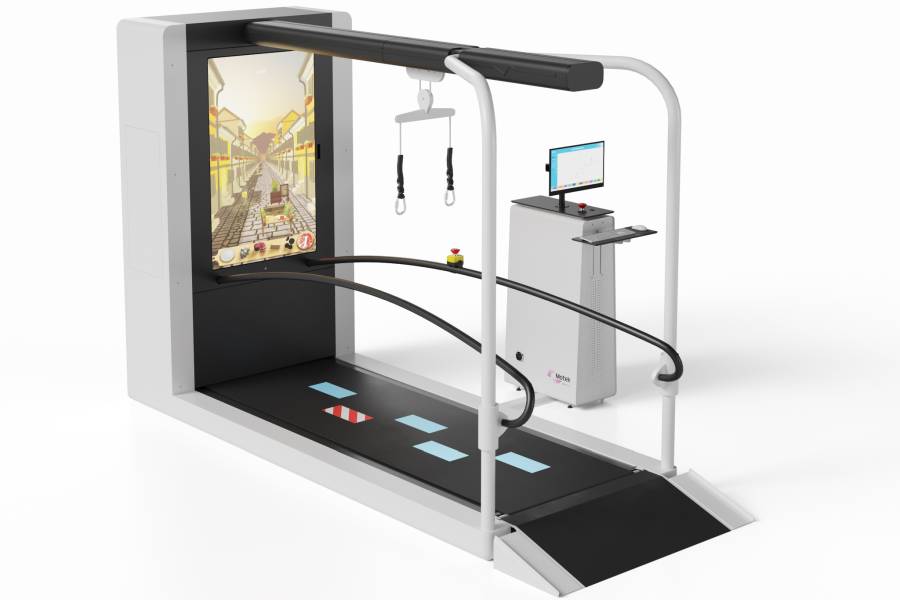
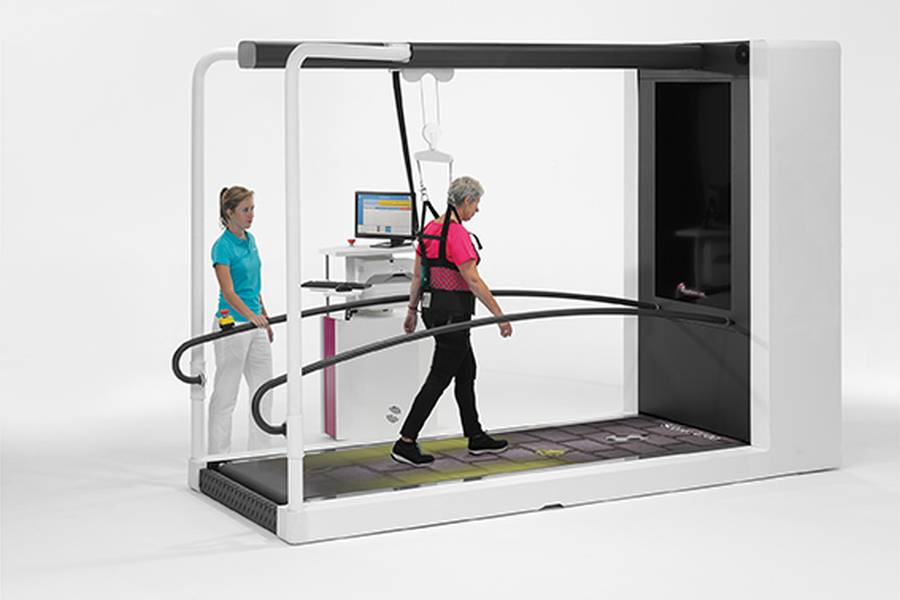
With the C-Mill, patients train realistically for everyday environments and changing situations, such as walking in crowds or avoiding obstacles.
Virtual reality, projections and force plates overcome the limitations of conventional therapy equipment. Therapists can simulate a wide range of realistic situations.
Comprehensive data collection allows for a sound, objective and highly reliable evaluation of balance, gait and gait adaptation.
The C-Mill assessments are helpful in all phases of the rehabilitation process:
All assessment data is clearly illustrated and output as substantiated reports.
The LokomatPro can be fitted with standard orthoses for adults or with pediatric orthoses, which are available as an optional module.
The pediatric orthosis are designed to accommodate small children by offering a special set of harnesses and cuffs that provide a precise fit for patients with femurs between 21 and 35 cm (8.3 - 13.8 in).
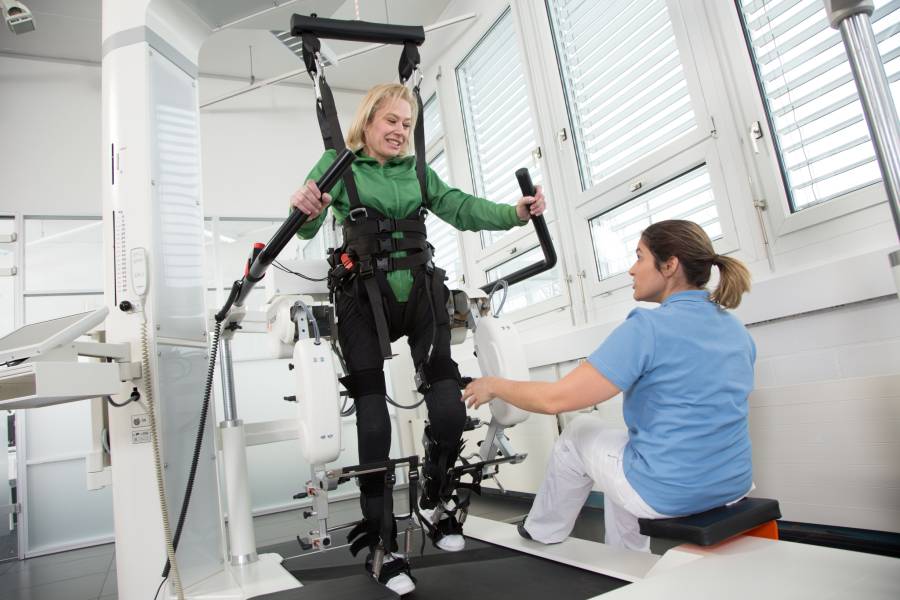
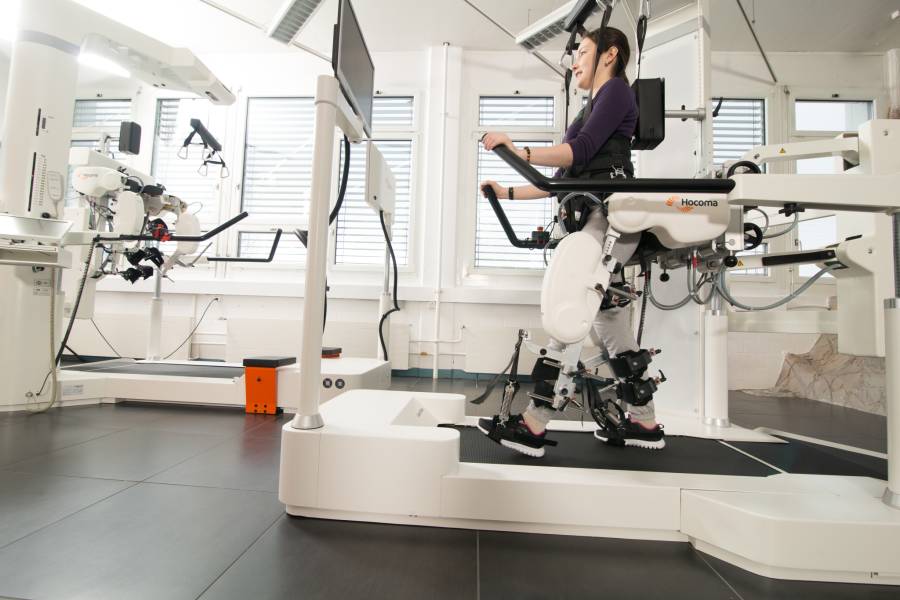
Since January 1, 2020, we have been using the ArmeoSpring arm and hand therapy system in our house. The system is already used in many clinics around the world. In the outpatient sector, we are among the first facilities to work with it. The ArmeoSpring is particularly suitable for the therapy of patients with neurological diseases, such as:
The ArmeoSpring is also used in the orthopedic field, such as:
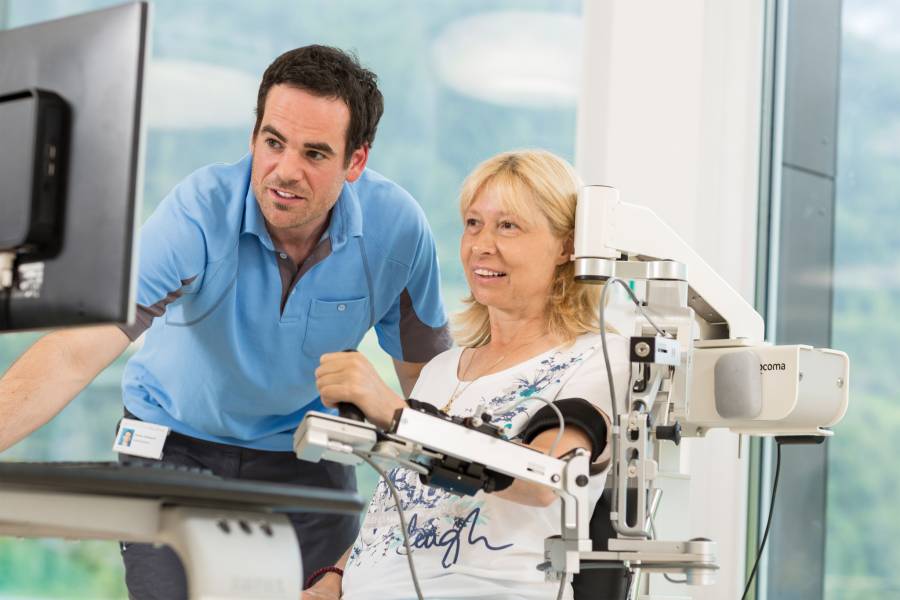
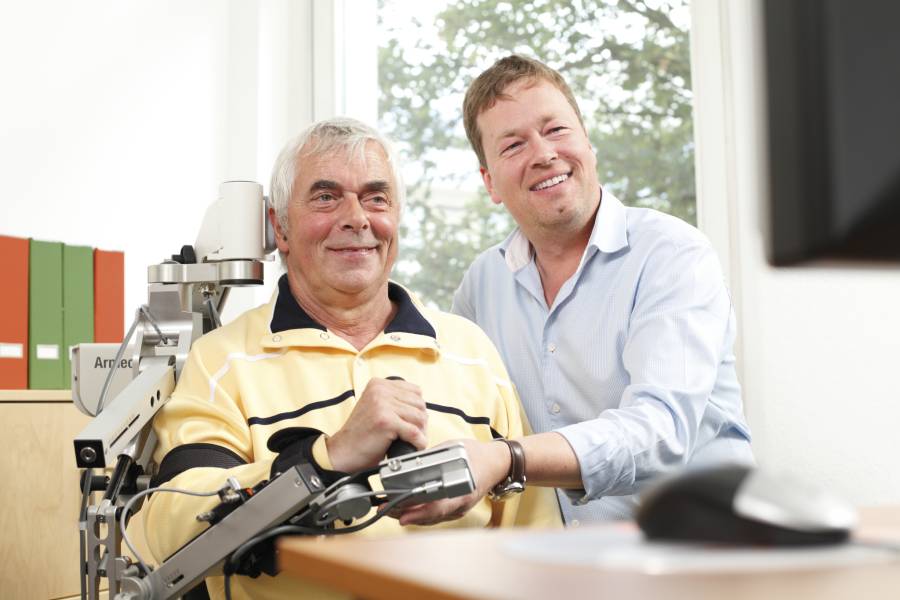
The ArmeoSpring is suitable for patients with impaired upper extremity functions. The core of the system is the combination of the following 3 functions:
Together, these three features provide the patient and therapist with the ability to increase therapy intensity, stay motivated while monitoring and reviewing their own progress.
Because the device recognizes even the smallest movement onsets and functions, it allows for intensive movement and grasping exercises with minimal residual muscle activity and allows for a high number of repetitive movements.
Thus, even patients in a chronic condition benefit from Armeo Therapy and improvements both on the device and in activities of daily living are noticeable.
THERA gait rehabilitation trainers use ultra modern robotic and computer technology to provide task-based training for strength, endurance and flexibility, balance, standing and walking.
With regular THERA-Training, affected persons can counteract negative effects of lack of movement, such as stiffening or muscle atrophy, in good time and thus positively influence activities of daily living, i.e. everyday life.
In the case of paralysis in the upper body, it serves to loosen muscles and reduce spasms. For active wheelchair users without paralysis in the upper body, the training serves to strengthen strength and endurance, as well as to increase breathing volume and general fitness.
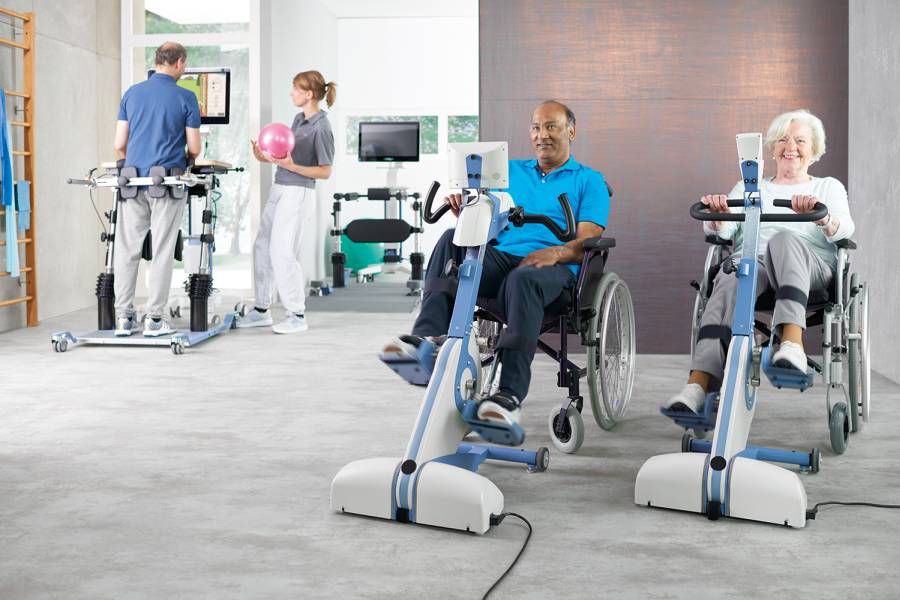
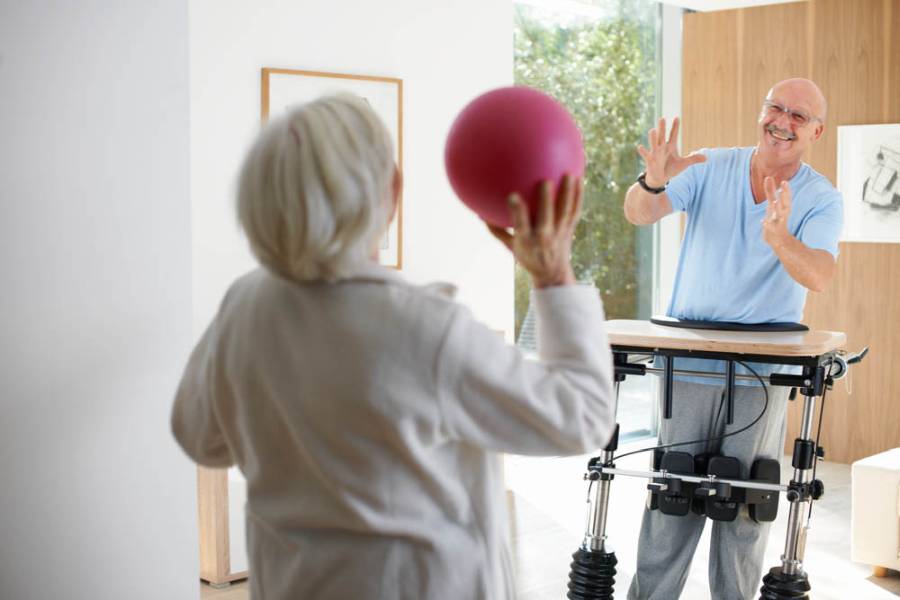
Satisfaction and physical well-being are closely linked and depend on many factors. Both can be positively influenced by regular exercise training. The daily training promotes strength, endurance and mobility, stabilizes circulation & metabolism and can incidentally improve the psychological well-being.
With regular THERA-Training, affected persons can counteract negative effects of lack of movement such as stiffening or muscle atrophy in time and thus positively influence activities of daily living, i.e. everyday life.
Patients whose active participation in rehabilitation training is impossible due to lack of or insufficient function can use Luna-EMG robotics to start their own rehabilitation training in the early stages of rehabilitation. Luna-EMG uses reactive electromyography (EMG) to train the sensorimotor cortex.
Patient movement is active - based on bioelectric signals (EMG) detected from the patient's muscles. This is especially effective in neurologically severely affected patients which allow for greater recruitment of motor units during muscle activation.
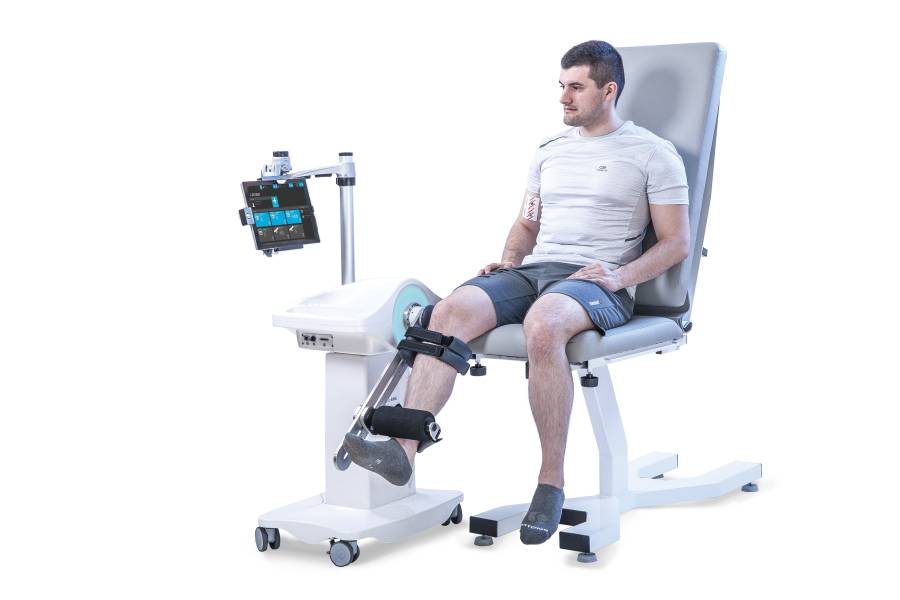
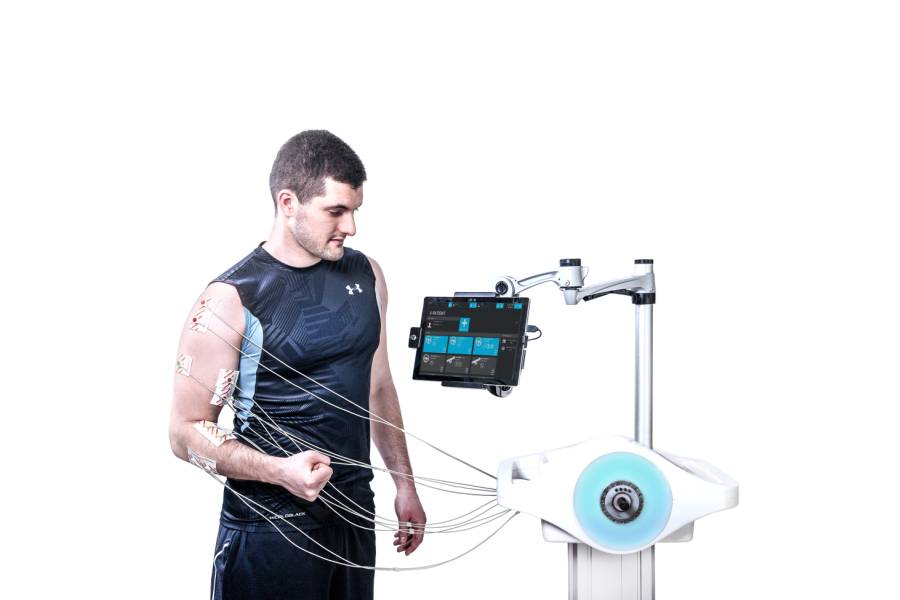
As of today, robotic therapy systems can be used for either hand, shoulder-arm or gait training. The Luna-EMG is the first and only EMG-based, multi-joint robotic therapy system that can be used for both lower and upper extremity use.
Diagnostic and evaluation tools enable "on the top" objectively valuable reporting of findings and progress. The Luna-EMG can be used from single-channel to six-channel operation.
The Meditouch Biofeedback Therapy System is based on kinematic biofeedback consisting of software and one or more measuring device(s).
Kinematic biofeedback is the measurement of movements or resting states and their visual representation.
The application of the system targets all limitations of the musculoskeletal system and is currently the only relevant whole-body biofeedback system for neurological and orthopedic rehabilitation. The application is intended for inpatient rehabilitation clinics as well as for treatments within the scope of the prescription of remedies.
The improvement of motor and sensory abilities are actively and repetitively relearned or trained by the patient. This is made possible by visualizing the movements performed by the patient in real time on the screen.
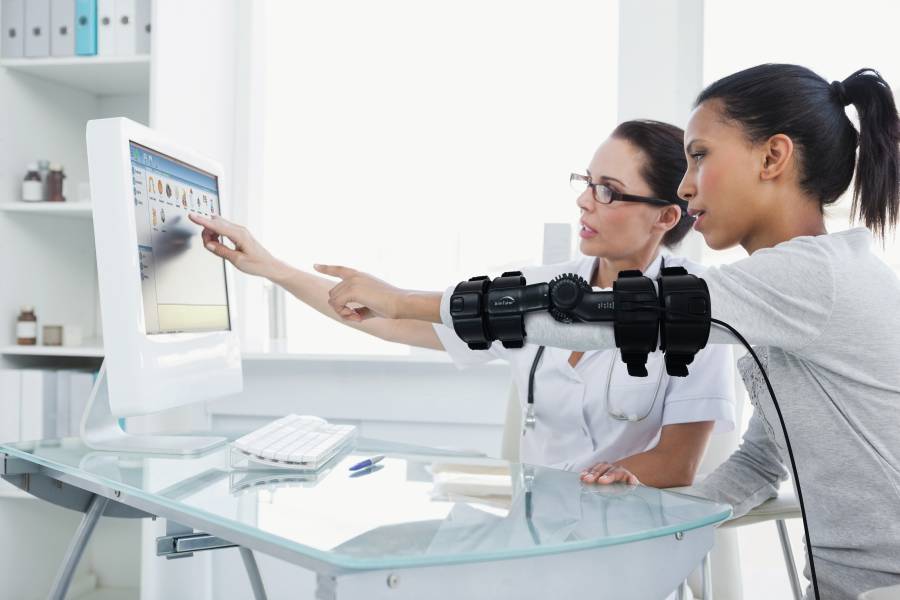
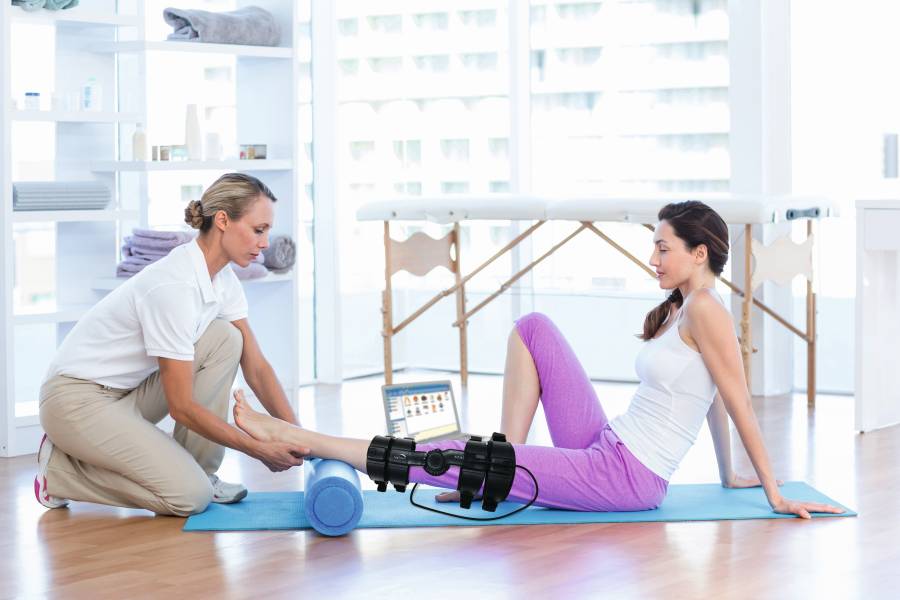
Depending on the measuring device, the lower and upper extremities, trunk and cervical spine can be treated. The application of the measuring device on the patient takes less than 1 minute.
Due to the extremely high measuring accuracy and measuring sensitivity of the Meditouch measuring devices, even minimal movements of the patient are visually and acoustically reported back. This enables the patient to effectively enter into movement therapy at a very early stage, when manual forms of therapy are only possible to a limited extent.
The system can also be used effectively in pediatrics from the age of about 7 years.
In combination with the classic therapies of occupational therapy and physiotherapy, the treatment successes are significantly greater than with non-combined therapies, especially in neurological diseases, as shown, for example, in a study at the Tel Aviv Faculty with the HandTutor™.
The Innowalk Pro is a robotic training device for rehabilitation that allows people with significant limitations in their ability to walk or stand to perform an intensive and functional full-body workout with a high number of repetitions.
In an upright position, secured by a belt system, legs and arms are in motion. The motion sequence is similar to training on a cross trainer.
No standing is required for this workout.
